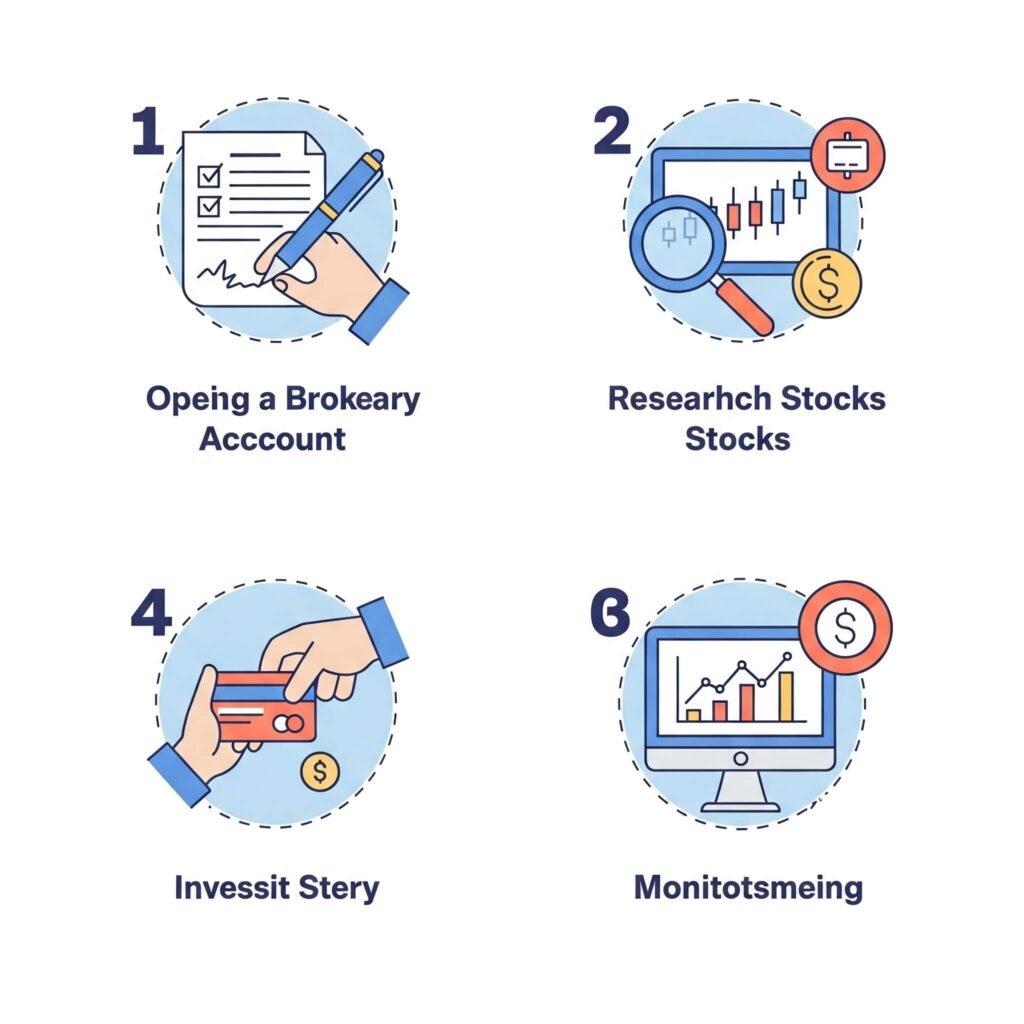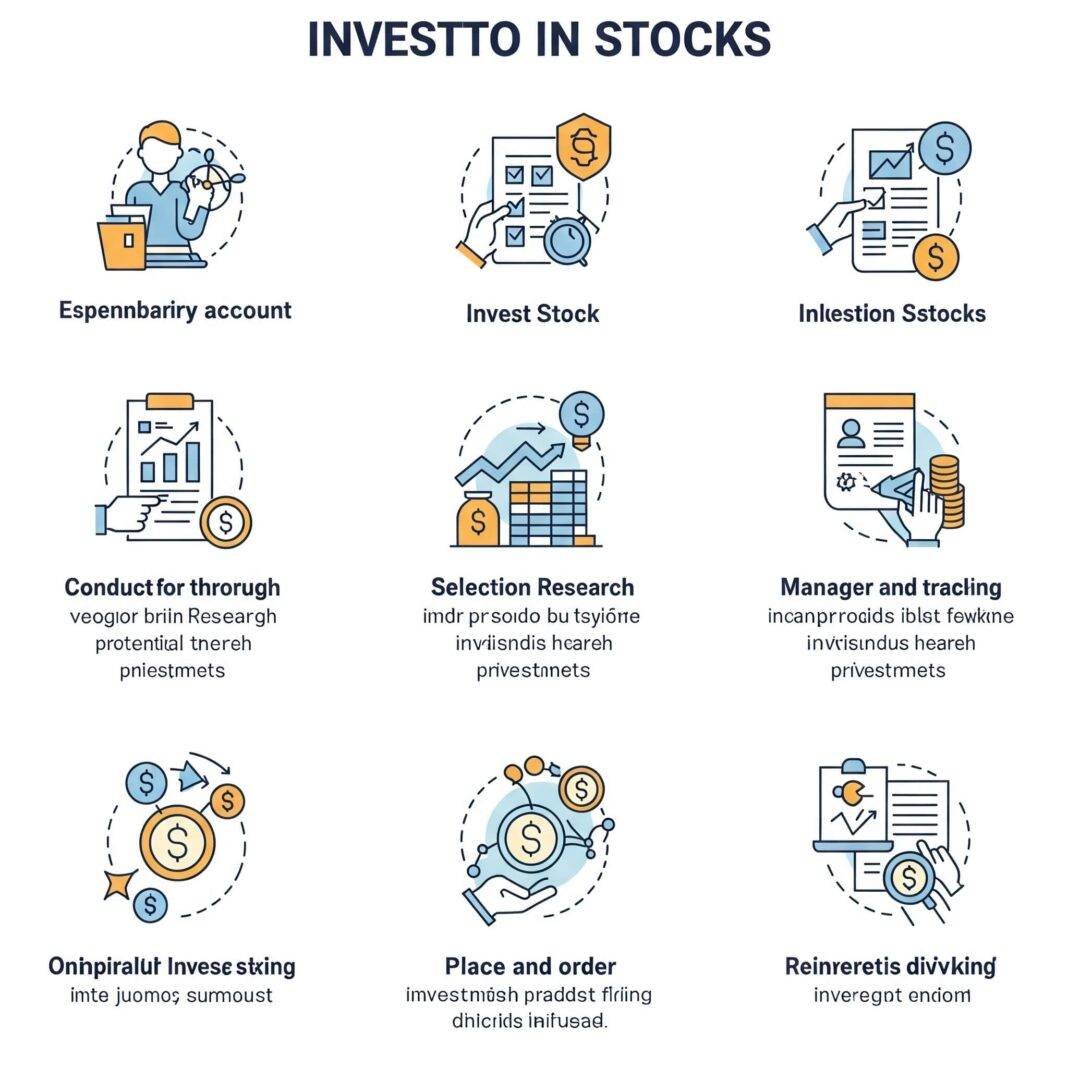
Why Invest in Stocks as a Beginner?
Stocks are one of the best ways to grow your money long-term. According to a 2024 Vanguard report, the stock market has averaged a 10% annual return over the past century, outpacing inflation and savings accounts. For beginners, stocks offer a chance to start small and learn while building wealth.
The Power of Starting Early
The earlier you invest, the more time your money has to grow through compound interest. For example, Mia, a 25-year-old barista, invested $1,000 in a stock index fund. By age 65, with a 10% average return, her investment could grow to $17,450, even without adding more money.
Outbound Link: Learn about stock market basics at Investopedia.
Step 1: Understand the Basics of Stock Investing
Before you invest in stocks, grasp the essentials:
- What Are Stocks?: Shares of ownership in a company, like Apple or Tesla.
- How Do You Make Money?: Through price appreciation (stock value increases) or dividends (company payouts).
- Risks: Stock prices can fluctuate, and you could lose money.
Pro Tip: Start with low-cost, diversified options like index funds to reduce risk.
Step 2: Set Clear Financial Goals for Stock Investing
Define why you’re investing in stocks to guide your strategy:
- Short-Term Goals: Saving for a car or vacation (1-3 years).
- Long-Term Goals: Building wealth for retirement or a home (5+ years).
- Risk Tolerance: Decide how much risk you’re comfortable with.
For instance, Alex, a 30-year-old teacher, set a goal to invest $200/month for retirement. His low-risk tolerance led him to choose an S&P 500 index fund.

Step 3: Open a Brokerage Account to Invest in Stocks
A brokerage account lets you buy and sell stocks. Here’s how to choose one:
- Compare Platforms: Look for low fees and user-friendly interfaces (e.g., Fidelity, Robinhood, Schwab).
- Check Fees: Avoid high commission or maintenance fees.
- Open an Account: Provide personal info and link a bank account (takes ~10 minutes).
For example, Sarah, a 28-year-old nurse, opened a Fidelity account with no minimum deposit and started investing $50/month.
Outbound Link: Compare brokerage accounts at NerdWallet.
Step 4: Research Stocks or Funds to Invest In
Research is key to smart investing. For beginners, focus on:
- Individual Stocks: Research companies with strong fundamentals (e.g., revenue growth, low debt).
- Index Funds/ETFs: Diversified funds like Vanguard’s VOO (S&P 500) are safer for beginners.
- Tools: Use Yahoo Finance or Morningstar for stock data.
Pro Tip: Start with index funds to spread risk across many companies.
For instance, Raj, a 27-year-old freelancer, invested in VTI (Vanguard Total Stock Market ETF) to diversify across 3,600+ U.S. stocks.
Outbound Link: Explore stock research tools at Morningstar.
Step 5: Start Investing in Stocks with Small Amounts
You don’t need thousands to start. Follow these tips:
- Start Small: Many platforms allow fractional shares (e.g., buy $10 of Amazon stock).
- Use Dollar-Cost Averaging: Invest a fixed amount regularly (e.g., $100/month) to reduce risk.
- Automate Investments: Set up recurring contributions to stay consistent.
Lisa, a 32-year-old designer, began with $25/week in an S&P 500 ETF. After a year, her portfolio was worth $1,400.

Step 6: Monitor and Adjust Your Stock Investments
Investing isn’t “set it and forget it.” Stay engaged by:
- Checking Quarterly: Review your portfolio’s performance.
- Rebalancing: Adjust holdings to match your risk tolerance (e.g., shift from stocks to bonds as you age).
- Staying Patient: Avoid panic-selling during market dips.
For example, Tom, a 35-year-old engineer, rebalanced his portfolio yearly, ensuring his stock-heavy investments aligned with his retirement goals.
Step 7: Keep Learning About Stock Investing
Knowledge grows confidence. Expand your skills with:
- Books: Read The Little Book of Common Sense Investing by John Bogle.
- Podcasts: Listen to The Investor’s Podcast for insights.
- Courses: Try free investing courses on Coursera.
The more you learn, the better your decisions. For instance, Priya, a 29-year-old marketer, took an online course and confidently added dividend stocks to her portfolio.
Outbound Link: Find investing resources at The Motley Fool.
Key Takeaways for How to Invest in Stocks
- Learn the Basics: Understand stocks, risks, and rewards.
- Set Goals: Align investments with your financial dreams.
- Open an Account: Choose a low-fee brokerage like Fidelity.
- Start Small: Use index funds and dollar-cost averaging.
- Stay Educated: Keep learning to make informed choices.
Investing in stocks is simpler than it seems. Take your first step today, and you’ll be on your way to building wealth!











































